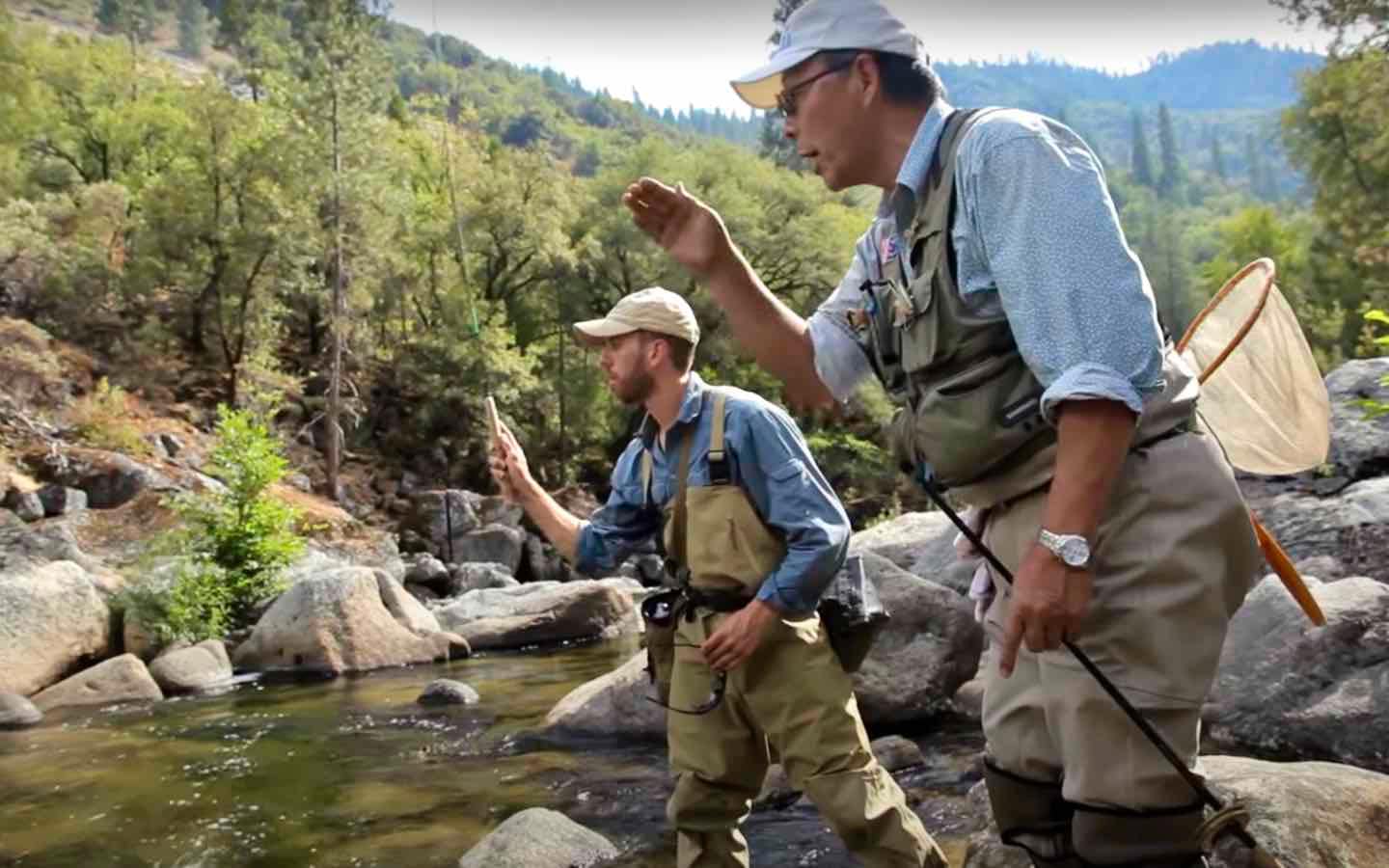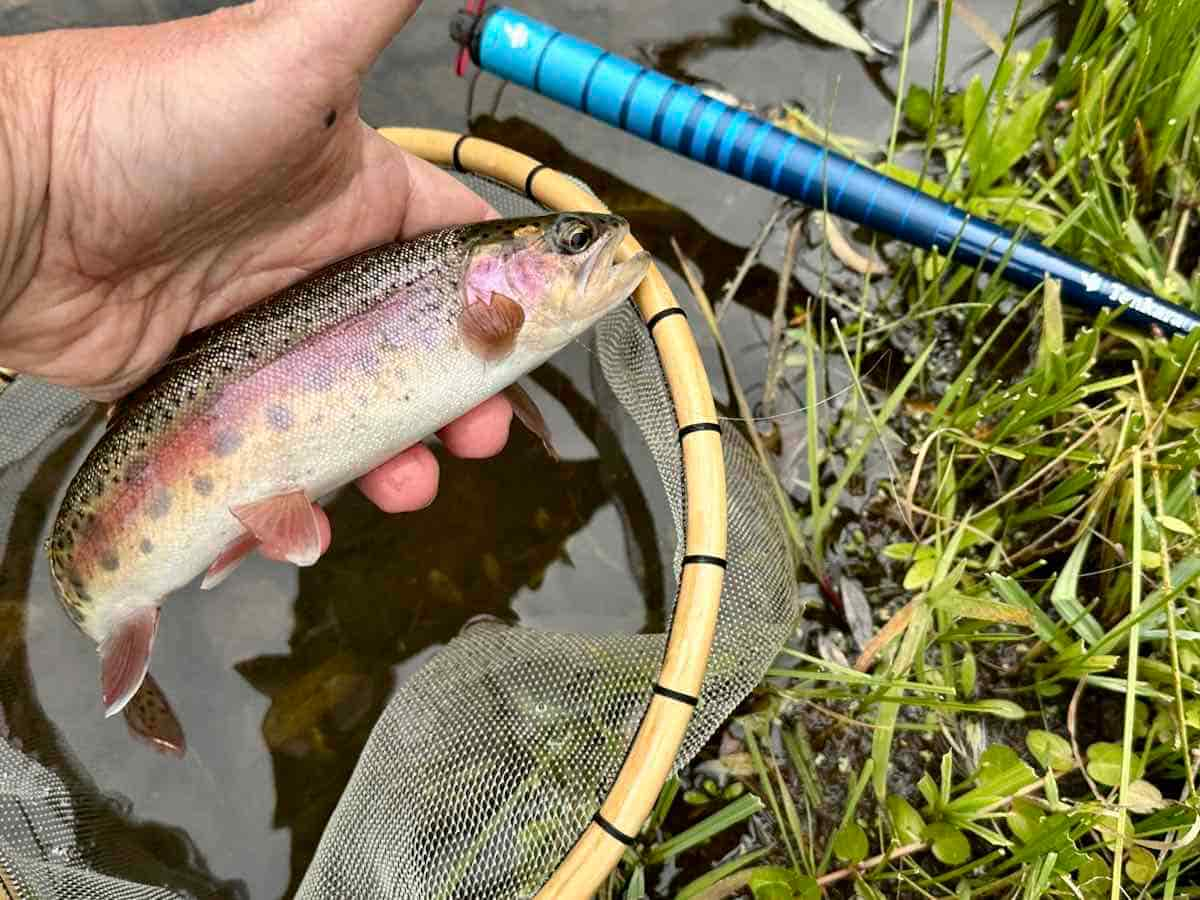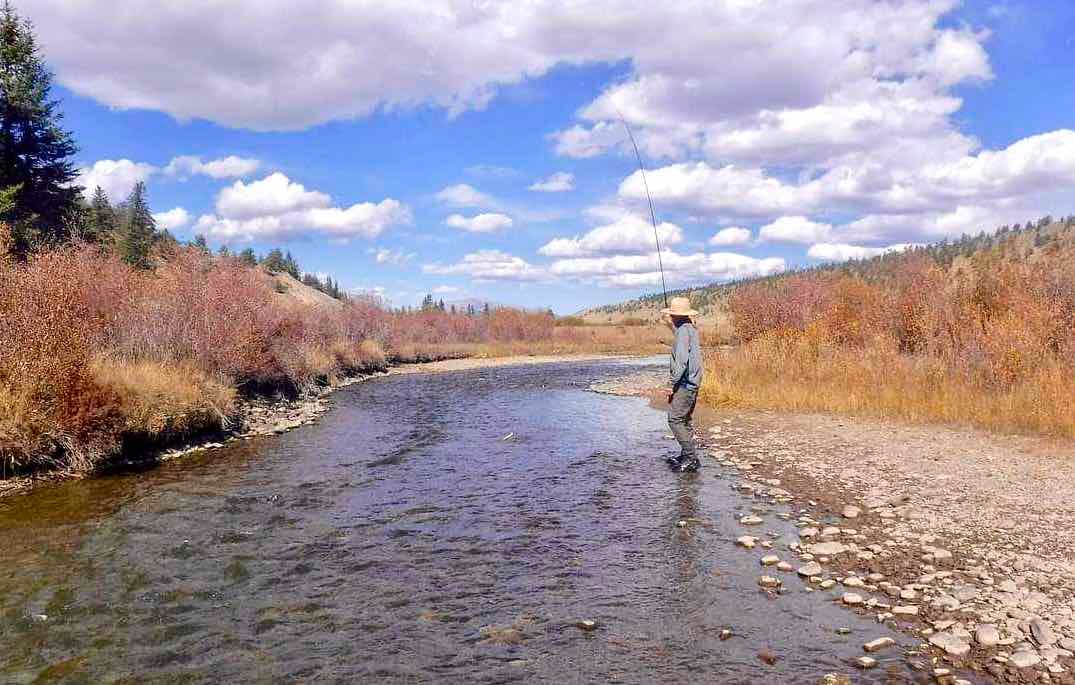Tenkara: Blending Simplicity, Elegance, and Efficiency

Tenakara USA founder Daniel Galhardo taking instruction from a tenkara teacher.
The Tenkara Philosophy: Back to Basics
Tenkara fishing is an ancient Japanese art that combines simplicity with a more profound and once utilitarian connection to nature. The technique was originally a commercial fishing method used by mountain men in Japan who would sell their catch to restaurants and inns. It’s not certain when the first tenkara rod brought a fish to hand, but written history points to its practice for at least two hundred years. Rooted in those clear mountain streams of Japan, tenkara is now embraced by anglers across the globe as more than just a fishing technique.
The allure of tenkara is obvious—a minimalist approach, eschewing the complexities of modern fishing gear for a purer, more intimate fishing experience. Pleasing aesthetics aside, it’s an objectively effective means of angling. Tenkara is a tool for pinpoint fly placement, perfect drifts, and the ability to thoroughly probe every tiny, fish-holding pocket on a clear mountain stream. Tenkara is angling stripped of much that is not needed. The essence of Tenkara is simplicity and efficacy.
Imagine standing beside a bubbling stream holding nothing but a long and flexible rod, a lightweight line, and a fly. That’s it. This uncluttered approach not only makes tenkara inviting and accessible to beginners but also offers a refreshing change for experienced anglers. The focus is less on gear and more on skill, technique, and a deeper understanding of the river and its inhabitants.
Daniel Galhardo: The Ambassador of Tenkara
Daniel Galhardo, the visionary behind Tenkara USA, first encountered Tenkara on a journey to Japan in the early 2000s. Impressed and infatuated by its elegance and effectiveness, he founded Tenkara USA in 2009 with a mission to introduce this traditional Japanese fishing method to the Western world. Since then, Tenkara USA has been at the forefront of a growing movement, inspiring thousands to embrace this simpler form of fly fishing.
The Tenkara Rod: Design and Function
Tenkara rods, such as the new and innovative Ukiyo, represent the pinnacle of design and functionality. Crafted from carbon fiber, these rods are astoundingly lightweight (the Ukiyo weighs a mere 2 ounces), yet remarkably strong and sensitive. Their extended length, typically ranging from 12 to 13 feet, allows for precise control and graceful presentations, a delicate yet deliberate connection between angler and fly. The rod’s incredible sensitivity is a conduit to the fish no matter how small. But don’t think tenkara is limited to small fish. Even 20-inchers have been successfully landed by tenkara anglers, and Tenkara USA offers eight rod models to cover a range of conditions and fish.

Lines: Tailored for Tenkara
In tenkara, the line is a crucial element, acting as a bridge between the rod and the fly. These lines are significantly lighter than traditional PVC-coated Western fly lines, enhancing the angler’s ability to execute precise casts and maintain control over the fly’s drift. The variety of lines available—from hi-vis nylon to fluorocarbon—ensures that anglers can find the perfect match for their style and the conditions they face. But while selecting a tenkara line can seem daunting, they all fish about the same. However, it’s important to note that these lines are specific to tenkara. While other lines can be used, specifically made tenkara lines are better suited to the peculiarities of a tenkara rod and method, offering more accurate casting, delicate presentation, and ease of setup with a new tenkara rod. Tied to the end of any of these lines is a 2 to 5 feet length of tippet with a break strength of 7 pounds or less.
Tenkara Flies: Simple by Design
Tenkara flies share this theme minimalism and effectiveness, but they might look odd to the Western angler. Traditional Japanese flies, like the iconic Sakasa Kebari, feature a reverse hackle (sakasa roughly means reverse in Japanese). This is the style of fly commonly preferred by Daniel Galhardo’s tenkara teachers in Japan, and all of the four fly patterns sold by Tenkara USA are this style. Western anglers are sometimes surprised to find that these flies are effective in a variety of conditions and for a variety of species. Tenkara flies are a valuable addition to any fly box, and they are an integral component of the Tenkara ethos—simplicity and elegance.
The Tenkara Experience: Feel the Rhythm
Fishing with tenkara is an immersive experience that invites an angler to find and move with natural rhythms. Casting a tenkara rod is both an art and an act of meditation, requiring a gentle touch and a focused mind. The technique is very similar to casting a traditional fly rod but more direct. It’s a balance of finesse, subdued power, and—above all else—the ability to not think about it too much. Because casting a tenkara rod is as intuitive as throwing a rock. That natural rhythm is already there. Anglers then discover that through these inherent skills brought to the surface, tenkara offers a unique opportunity for a more intimate relationship with both the water and the angling experience. This connection, this dance, is what draws many to tenkara and keeps them returning to the water, rod in hand.

Tenkara USA: A Legacy of Quality and Innovation
In the nearly 15 years since Tenkara USA was formed, the company has established itself on quality and innovative leadership in the world of fly fishing. Their commitment to customer service and education has helped foster a vibrant community of anglers, eager to explore the depths of this ancient fishing tradition. With a range of expertly designed rods, lines, and flies, Tenkara USA is a lodestar in the tenkara community.
Tenkara: More Than Fishing, A Way of Life
Tenkara is not just a method of fishing; it’s a way of life. It invites anglers to slow down, to fully embrace the rhythm of the water and the fish. Whether you’re a seasoned fly angler or a curious beginner, Tenkara offers a path to a more mindful, more connected form of fishing. It’s an invitation to simplicity, a call to rediscover the joy of fishing in its purest form.










